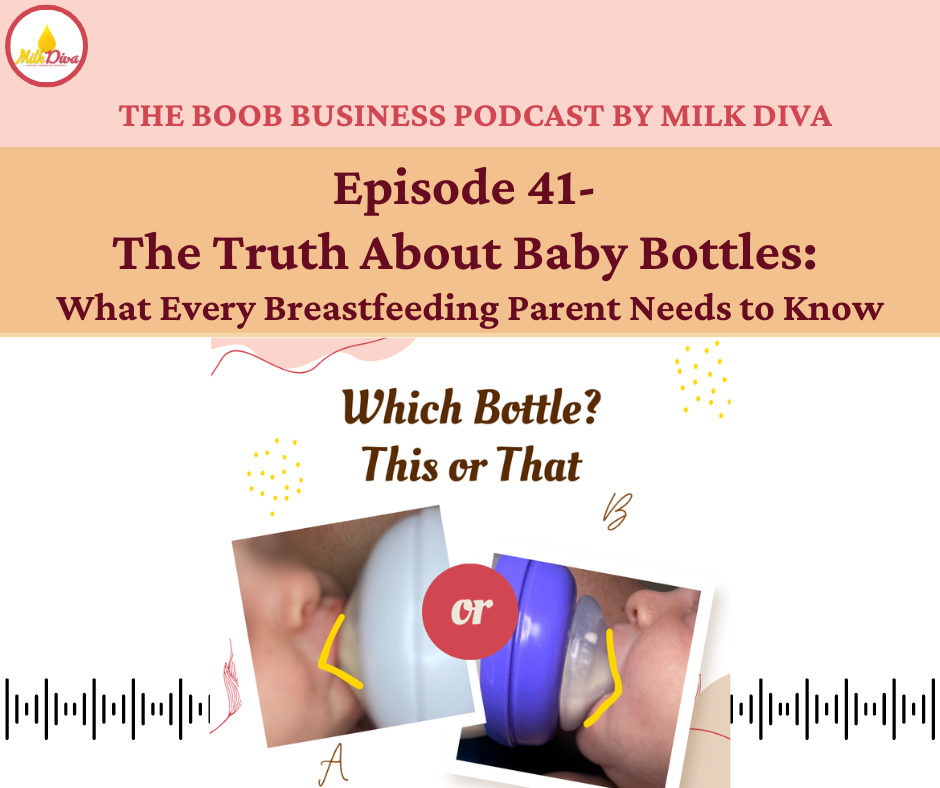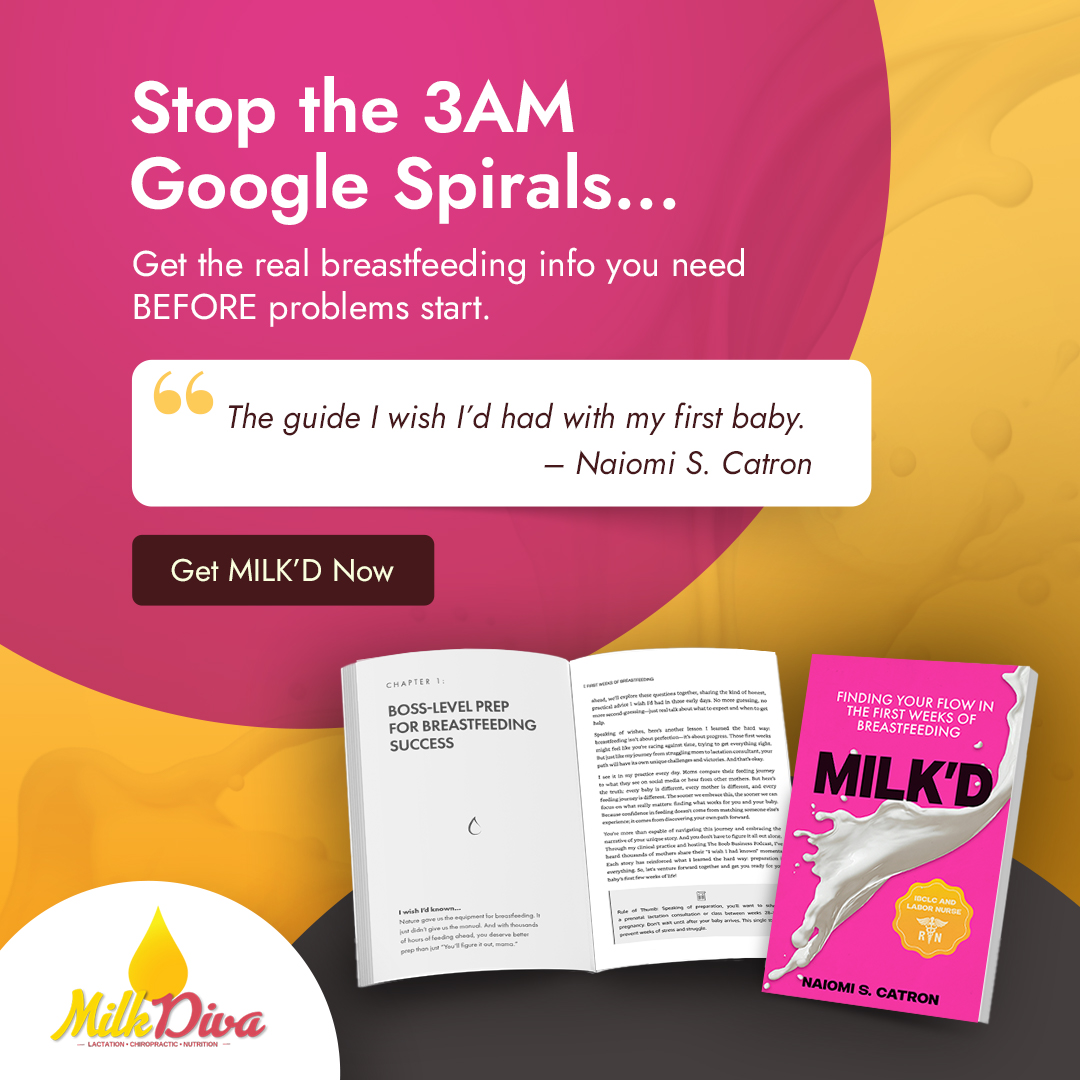
As a breastfeeding parent, you’ve likely encountered the confusing and overwhelming world of baby bottles. With shelves lined with dozens of brands, each boasting about being "the best for breastfed babies," it can feel impossible to know what will truly work for your little one. In our latest episode of The Boob Business Podcast, The Truth About Baby Bottles: What Every Breastfeeding Parent Needs to Know, I dive deep into this topic and provide breastfeeding parents with the information they need to make informed choices.
From myths about nipple confusion to the realities of nipple flow, I break down everything you need to know about choosing the right bottle for your baby, whether you're introducing a bottle for the first time or looking for ways to improve bottle feeding. You can watch the full episode on YouTube [here] or tune in on your favorite podcast platform. Let’s take a closer look at what we covered in the episode and why this information is so important.
UNDERSTANDING NIPPLE CONFUSION: MYTH OR REALITY?
One of the most common concerns breastfeeding parents face is the fear of “nipple confusion.” This idea suggests that when babies are introduced to bottles too soon, they may struggle to breastfeed, or worse, prefer the bottle over the breast. But is nipple confusion really something to worry about?
In the episode, I break down the facts behind nipple confusion. While it can happen, it’s not as common as you might think. In fact, what’s often mistaken for nipple confusion is more likely the result of an improper bottle technique, flow rate issues, or simply adjusting to a new feeding method.
To ease your mind, I offer insights on how to ensure your baby smoothly transitions between breast and bottle without frustration. We talk about how to pace the feeding and ensure the baby remains comfortable during both breastfeeding and bottle feeding. These strategies can help reduce any risk of nipple confusion and create a more seamless feeding experience.
NIPPLE FLOW RATES: WHY THEY MATTER
Another key topic covered in this episode is nipple flow rate—an often overlooked factor that can make a huge difference in how your baby feeds from a bottle. Too slow a flow rate can frustrate your baby, while too fast a flow can cause choking, gagging, or even bottle rejection altogether.
If you’re unsure whether your baby is struggling with flow rate, I suggest a simple test to try at home. In fact, we’ve provided a demo on YouTube showing you how to test your bottle’s flow rate to see if it’s too fast or too slow for your baby’s needs. You can check out the demo in the full YouTube video episode [here]
I also discuss how bottle marketing can often be misleading when it comes to flow rates. Just because a bottle is labeled as “slow flow” doesn’t always mean it is truly slow enough for a breastfed baby. We dive into the inconsistencies between brands and how you can determine the right flow rate for your baby by observing their feeding behavior.
OVERCOMING BOTTLE REFUSAL
If you’re one of the many parents who’ve struggled to get your baby to take a bottle, you’re not alone. Bottle refusal can be stressful, especially if you’re planning to return to work or need a break from breastfeeding. In this episode, I share some tried-and-true strategies to help overcome bottle refusal, especially in the early weeks when feeding habits are still being established.
Some of the key techniques I recommend include:
Offering the bottle at the right time: Timing is everything. Avoid offering the bottle when your baby is too hungry or too tired.
Using paced bottle feeding: This technique mimics breastfeeding, allowing your baby to control the flow of milk and avoid overwhelm.
Experimenting with different nipples: Every baby is different, and sometimes it’s just a matter of finding the right nipple shape or flow rate that works for them.
By implementing these techniques, you can help ease your baby’s transition from breast to bottle without too much resistance.
WHY YOU SHOULDN’T TRUST BOTTLE MARKETING
Finally, one of the most important points discussed in this episode is the fact that you shouldn’t always trust what’s on the bottle packaging. While bottle companies claim to have the perfect solution for breastfed babies, the truth is, marketing tactics are designed to sell products, not necessarily to support breastfeeding success.
Many bottles boast about being “anti-colic,” “breast-like,” or “perfect for breastfed babies,” but the reality is that what works for one baby may not work for another. Marketing terms can be vague and misleading, so it’s crucial to focus on what your baby needs rather than what the packaging promises.
In this episode, I encourage parents to take a critical look at bottle packaging and focus on observing how their baby responds to different bottles, rather than relying on marketing claims. After all, feeding your baby is a highly individualized experience, and what matters most is finding what works for your little one.
FINAL THOUGHTS
Choosing the right baby bottle for your breastfed baby can feel overwhelming, but with the right information, you can make a more informed choice. Whether you’re concerned about nipple confusion, nipple flow, or bottle refusal, I hope this episode provides the guidance you need to navigate the bottle-feeding journey confidently.
Be sure to watch the full episode on YouTube [here], where we also share a demo of nipple flow testing. You can also listen on your favorite podcast platform and don’t forget to share this episode with fellow parents who might find it helpful!






